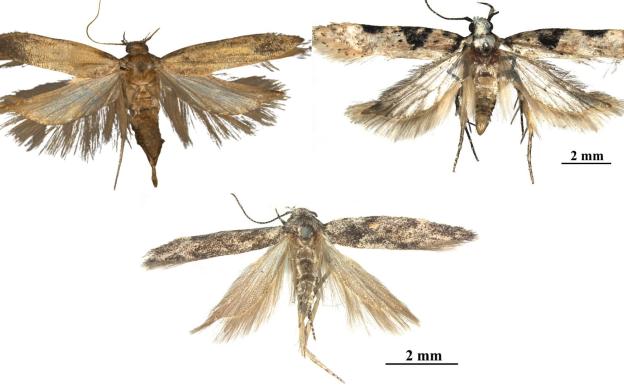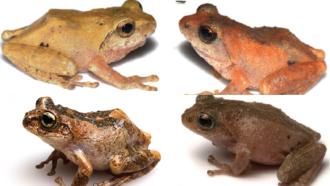![Asiatic lions in the Gir Forest [Image Credits: Keshab Gogoi, 2020] An accurate count of Asiatic lions could help design better conservation practices](/sites/researchmatters/files/styles/large_800w_scale/public/asiaticlion1.jpg?itok=tIhaNPe_)
A new study proposes an improved approach to determine lion densities and identify factors that affect their abundance, but there may be flaws say some.
The Gir National Park in Gujarat represents a successful conservation story for the charismatic Asiatic lions (Panthera leo persica), as their numbers have apparently surged from less than fifty individuals to claims of over 500 in a century. As a consequence, these cats have started to disperse into neighbouring villages, killing livestock, and sometimes, people. Since the Gir forest is the only natural habitat where Asiatic lions are found, it becomes crucial to monitor their numbers accurately and devise conservational strategies aimed at reducing human-lion conflicts.
In a new study, researchers at the Wildlife Institute of India, Dehradun have estimated the spatial density of Asiatic lions in a part of Gir National Park and determined what factors affect their density. The study, published in the journal PLOS One, estimates that for every 100 square kilometres area, about nine lions are found. It uses an approach - first developed for African lions - of identifying individuals rather than relying on conventional population estimation techniques, which are prone to biases. The study was funded by the Wildlife Institute of India and the Department of Science and Technology, Government of India.
“Wildlife population estimation science has reached heights of sophistication. Yet, the estimation of the only population of endangered Asiatic lions uses a 50-year old technique known as total counts,” says Dr Yadvendradev Jhala, the corresponding author of the study, who has studied lions for over two decades.
Since this approach does not individually identify lions, it does not account for double counts and could miss counting a few.
Accurately counting wildlife populations is a challenge, and hence, scientists and managers often resort to arriving at crude estimates using animal signs, such as pug marks or tracks, or attempt to tally up all sightings of a species in a region. In some cases, more reliable approaches, like using faecal DNA or camera traps, could be employed to identify individuals to estimate the number of animals in a park.
“Globally, lions have been counted rather poorly, and India has been no exception. When the adopted methodologies aren’t robust, not only will numbers be inaccurate, but they can produce misleading population trends. This surely cannot benefit science or conservation,” says Dr Arjun Gopalaswamy, Science Advisor (Global Programs), Wildlife Conservation Society.
Along with Dr Nicholas Elliot, Dr Gopalaswamy developed the approach, used by the current study, on African lions in Masai Mara, Kenya.
A reliable and scientific approach
The researchers of the current study covered about 30% of the Gir Protected Area between December 2014 and April 2015. They divided their study area into smaller grids and visited each of them multiple times during this period to track lions. They identified each lion individually by looking at the whisker patterns and permanent body marks, and estimated their density using a statistical model called ‘spatially explicit capture-recapture’.
“This approach uses information on spatial data on individually identified lions to determine their spatial density after accounting for detection probability, thus providing an unbiased estimate,” explains Dr Jhala.
In their study, the researchers obtained 368 detections of 67 individual lions, based on which they estimated the density of lions older than a year to be 8.53 per 100 sq km. The range of male lions was found to be larger than that of lionesses. The lions seemed to prefer flat valley habitats as opposed to rugged terrains, as they have soft padded feet conducive to walking on smooth surfaces.
The study also estimated the abundance of prey animals like Chital (Axis axis) and Sambar (Rusa unicolor) to see if their density influenced the abundance of lions.
“We expected that prey density would determine lion density as more natural food would mean more lions,” shares Dr Jhala. However, this is not what they observed. “Contrary to our expectations, lion density was highest near tourist hotspots,” he says. Baiting, the act of providing food to attract lions, seem to be the culprit here.
However, Dr Gopalaswamy is sceptical about the unusual findings of the study due to a methodological problem. “In search-encounter based spatial capture-recapture surveys, such as the one used here, it is absolutely essential to consider how much effort you invest in each grid cell on each day. Because the more effort you invest in a grid cell the more likely you are to detect a lion if present,” he says. In their study at Masai Mara, the effort put in for the survey turned out to be the most influential factor in determining variation in lion detection rates. “This fundamental problem may have contributed to many of the unusual patterns emerging from this study,” he remarks.
Baiting a bane for Gir’s lions
With an annual footfall of about 1.2 million tourists, the livelihoods of many in the surroundings of the Gir National Park depend on lion centric tourism. Besides, the pastoral hamlets, called nesses, rear buffalos and cattle, upon which the lions occasionally prey. As a current practice, authorities dump dead livestock in the tourism zone of the park to minimise predators near the nesses and maximise lion sightings. The present study found a high density of lions in these baiting sites.
“Though well-intentioned, baiting disrupts the social dynamics of the lions and artificially inflates local density,” opines Dr Jhala. The unreasonably high density of lions observed in the study corroborates this. The lion prides found around baiting sites were larger than those found in other areas of the study region.
The practice of food provisioning by humans has also influenced the behavioural traits of the lions. The study found that younger lions, belonging to the prides found in baiting sites, lacked the skills needed to hunt. Instead, they relied on provisioned food and grew up as scavengers. Over time, when they move out of the baiting sites, they begin to come in conflict with humans and attack livestock as they are easy targets, say the authors.
The findings highlight how ill-informed strategies, like baiting to attract lions for tourism, can perturb their natural densities, disrupt their behaviour and influence their social dynamics. They call for a more robust approach to calculate their abundance in protected areas to design conservation strategies. “We believe that decision on policy and management of any species, especially endangered species and the last surviving population, should be based on reliable scientific information and our work provides one such mechanism to obtain this information,” signs off Dr Jhala.
“It is essential in wildlife population studies that the field methods match the analytical methods used, accurately. Otherwise, we tend to get faulty answers. With respect to this study, it is essential for a closer look at some of the odd patterns that have emerged in due course,” concludes Dr Gopalaswamy.






